
U.S. Department of Transportation
Federal Highway Administration
1200 New Jersey Avenue, SE
Washington, DC 20590
202-366-4000

Ultra-High Performance Concrete—Extending the Life of the Nation's Bridges
Strategic Workforce Development in EDC-6
Michigan Uses Virtual Approach to Capture Public Input on Projects
Advancing Project Bundling – Old Concept, New Momentum
EDC Legacy: Creating Network Connections to Keep Traffic Moving Safely
Keeping bridges in a state of good repair is essential to keeping the transportation system operating efficiently. All transportation agencies can deploy ultra-high performance concrete (UHPC) to cost-effectively preserve and repair bridges.
UHPC is a fiber-reinforced, cementitious composite material with mechanical and durability properties that far exceed those of conventional concrete materials. This has made it popular for bridge construction, especially for field-cast connections between prefabricated bridge elements (PBE). Preservation and repair (P&R) of bridge infrastructure is a new application of UHPC that offers enhanced performance and durability and improved life-cycle cost over traditional methods. UHPC can be used in situations that normally use conventional concrete or repair mortars, and in some cases those that use structural steel. The primary benefit of UHPC repairs is that they are long lasting and resilient, requiring less maintenance and fewer follow-up repairs than conventional methods. Additionally, some UHPC mixes gain strength rapidly, so for certain repair applications, bridges could be opened to traffic 24 hours after completing the necessary repairs.
Examples of UHPC P&R applications include bridge deck overlays, girder end repairs, expansion joint repairs, PBE construction joint repairs, and column or pile jacketing. Some applications, such as bridge deck overlays and replacing expansion joints with UHPC link slabs, can extend the service life of bridges well beyond that of traditional repair strategies and are more cost-efficient than bridge replacement.
"The cost of UHPC-based solutions has to be thought of holistically," said Zach Haber, FHWA structural engineer and Every Day Counts round six (EDC-6) team co-lead for UHPC. "While the up-front cost may be higher than conventional solutions, once life-cycle costs are considered, UHPC is a more economical solution. You can fix it numerous times with conventional solutions or once with UHPC."
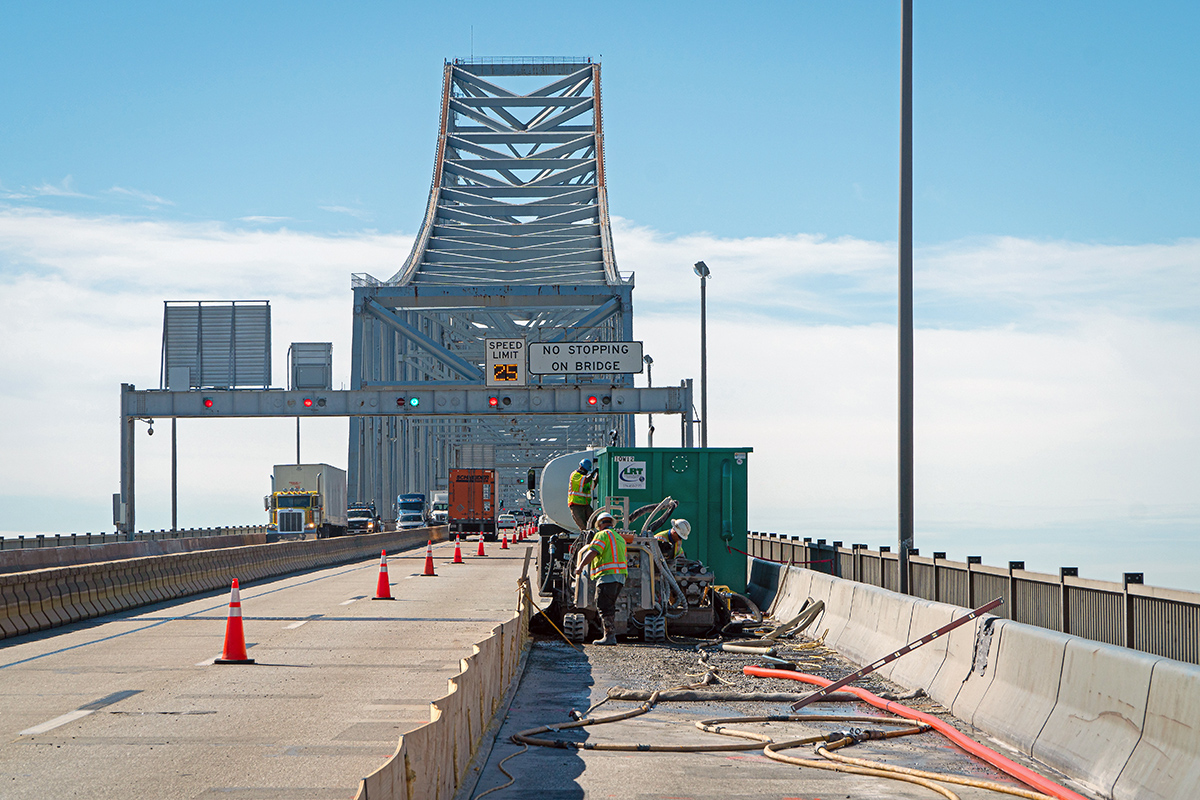
In addition to the Delaware Memorial Bridge, UHPC overlay pilot programs have been initiated on the Commodore Barry Bridge in Pennsylvania, shown here, and the Newport Pell Bridge in Rhode Island.
Bridge deck overlays are a relatively new application for UHPC, having only been deployed in the United States since 2016. Currently, about 10 of the country's bridges have used UHPC overlays and, based on early projects, UHPC overlays are expected to add decades of service life to existing decks, potentially giving a new service life equal to a completely new bridge deck.
In 2019, the Delaware River and Bay Authority (DRBA) undertook a study of options to repair or replace the deck of the New Jersey-bound span of the Delaware Memorial Bridge. Over the past few decades, DRBA spent an ever-increasing amount of money patching the deck and has only seen an average repair service life of 10 years. As the existing deck approached 50 years of service life, DRBA performed a detailed deck condition evaluation and determined that continued deck patching was becoming unsustainable and the deck would likely need to be completely replaced in the next 5 to 15 years. The DRBA study compared a UHPC overlay with a new latex-modified concrete (LMC) overlay and a complete deck replacement.
The study found that while the average life expectancy of LMC overlays is in the range of 10 to 15 years, the material properties of UHPC and performance of field applications to date suggest the service life of a UHPC overlay could be as much as 50 years or more. To account for costs over time, a life-cycle cost analysis compared the options over a common 50-year evaluation period. The results concluded that a UHPC overlay was the most cost-efficient option, estimating a 50-year cost of $80 million, compared to a new precast deck, with a 50-year estimated cost of over $145 million.
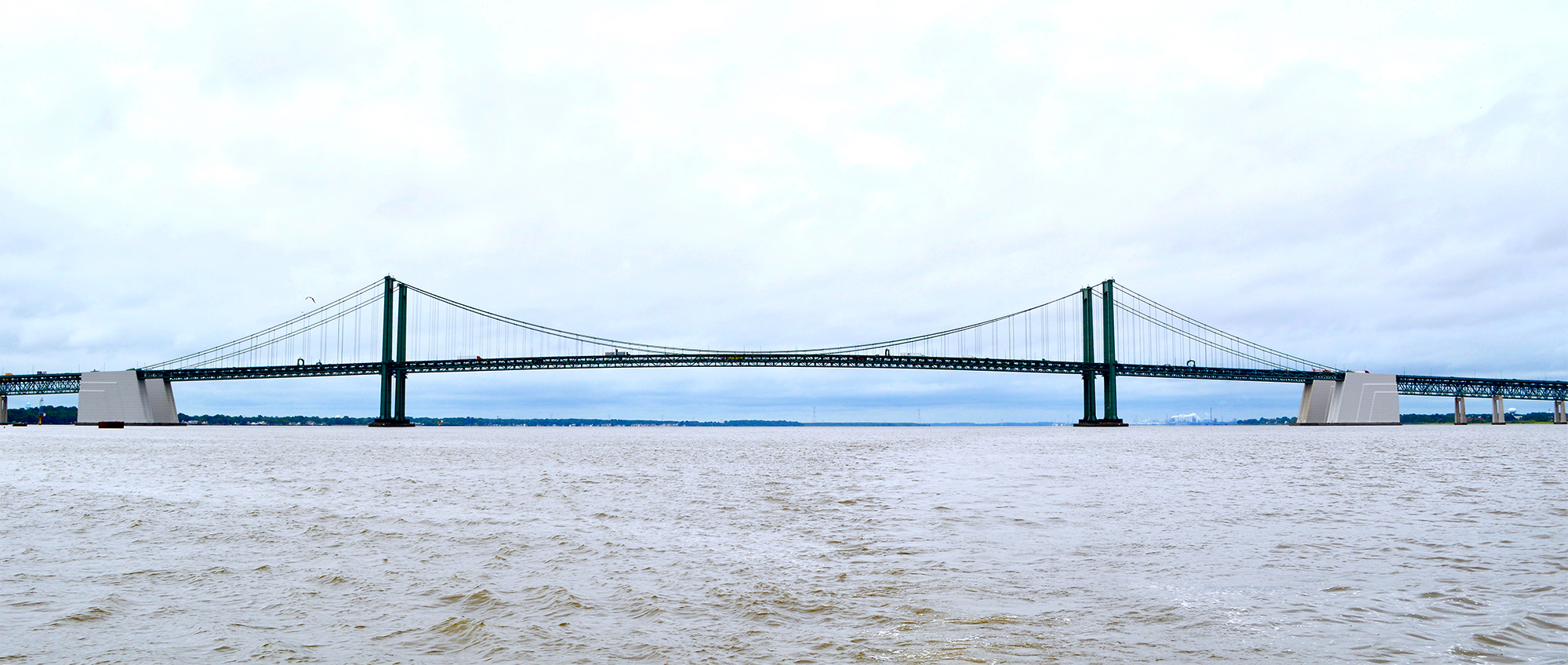
The Delaware Memorial Bridge UHPC deck overlay pilot project commenced on the bridge's New Jersey-bound span in September 2020.
"A UHPC bridge deck overlay is unique in that it offers bridge agencies an opportunity to significantly extend the service life of their bridge decks without incurring the prohibitive costs of deck replacement," said Shekhar Scindia, DRBA structural engineer. "Depending on the thickness of the overlay chosen, cost reductions can be anywhere between 25 to 40 percent compared to full deck replacement. Furthermore, by its very nature and characteristics, UHPC overlays present significant advantages over competing alternatives such as LMC overlays. UHPC is at least twice as strong as LMC, its tensile strength is nearly four times that of LMC, and its life expectancy is projected to be as much as four times greater."
"Moreover, an overlay installation project can be completed with much less disruption to traffic when compared to a full deck replacement project," said Scindia. "Lower costs, much better structural properties, and less disruption to traffic during installation make a UHPC overlay for bridge deck preservation a significantly attractive choice for bridge agencies."
Read a DRBA press release for more technical details on the Delaware Memorial Bridge UHPC deck overlay pilot project.
To learn more about UHPC for bridge preservation and repair, contact Zach Haber or Mark Leonard, EDC-6 team co-leads, or visit the team's EDC website.
The highway system affects every American. It connects distant corners of the continent, empowers a robust economy, provides ease of travel, and creates unprecedented opportunity for people to change their lives for the better. While the highway system delivers significant benefits, it must also be built, maintained, and operated by many, many people. Construction firms nationwide are having trouble finding those people.
According to a 2019 survey by the Associated General Contractors of America (AGC), 80 percent of construction firms reported difficulty finding qualified workers. A 2015 report by the U.S. Departments of Transportation, Education, and Labor echoed the massive and growing need for construction workers. Identifying, training, and placing workers into highway construction jobs is of vital national importance.
The sixth round of the FHWA Every Day Counts program (EDC-6) includes a strategic workforce development initiative to help companies and agencies overcome their workforce challenges.
This effort is a culmination of many years' work. In 2016, FHWA partnered with multiple national agencies and organizations to establish the Highway Construction Workforce Partnership (HCWP). A 2-year HCWP pilot, from January 2017 to December 2018, explored how industry could collaborate with the public workforce system to recruit, train, and retain highway construction workers. The pilot was conducted in 12 locations—six State departments of transportation and six local public agencies. Based on the findings of the pilot, FHWA developed a concise, practical playbook called "Identify, Train, Place" for others to conduct their own highway workforce development efforts.
FHWA also developed an outreach campaign called Roads To Your Future to help raise awareness of highway construction as a career opportunity. The campaign includes free, downloadable marketing materials for use by anyone to attract people to the industry. Most of the materials can be customized to add local contact information.
Karen Bobo, director of the FHWA Center for Transportation Workforce Development and co-leader of the EDC-6 strategic workforce development implementation team, said the pilot and playbook were a good start, but an effort as large as construction workforce development needs a bigger boost.
"FHWA cannot solve this problem alone, but we have a crucial piece," Bobo said. "FHWA has a national network to facilitate collaboration and learning between groups that might never have contact otherwise. There are answers to our workforce shortage out there, but they are in little pockets across the country. We see our role in EDC-6 as facilitators—finding those with the answers and connecting them to people with similar challenges."
The implementation team will conduct multiple peer exchanges and webinars as part of its EDC-6 efforts. The goal of these gatherings is to attract not only entities familiar with the highway construction workforce problem, but unconventional partners with different perspectives and networks, such as local workforce centers and community colleges.
"America already has a robust workforce development system managed by the U.S. Department of Labor Employment and Training Administration that includes a national network of Workforce Development Boards and Job Centers," said Clark Martin, FHWA program manager for the HCWP. "Those organizations know how to train people and place them in careers. The HCWP brings that system together with the highway industry. There are good jobs in highway construction, and working together we can show what a viable career path it is."

The EDC-6 strategic workforce development initiative builds on national efforts to identify and train workers to fill jobs in highway construction.
Several States have developed innovative approaches to fill highway construction jobs. While no one has completely solved the puzzle, each has discovered a piece that might help others.
In Arizona, the State chapter of the AGC worked directly with construction firms to attract and train job candidates. They developed a 1-week course that covers the basic work and life skills candidates need to be hired. The course also includes field trips to highway construction sites. A key component of the training is that, if students finish, they are guaranteed a construction job.
The Idaho HCWP established a program that includes certifications in heavy equipment operation as well as hazardous waste operations and emergency response. Students also receive forklift training, the Occupational Safety and Health Administration 10-hour (OSHA-10) certification, and the National Center for Construction Education & Research construction and safety certification. A "field day" is held after the course to showcase the students' skills to potential employers on eight types of heavy construction equipment (grader, loader, dozer, large and small excavator, skid steer, forklift, and water truck).
In Alabama, FHWA worked with firms and the community college system to create a modular highway construction curriculum. The class includes basic math, written and interpersonal skills, the OSHA-10 certification, and other more advanced skills. The course culminates by connecting graduates to construction firms for job interviews.
Everyone wins when highway construction jobs are filled. Workers find a stable, satisfying career and the Nation has the infrastructure it needs to thrive. Bobo sees this EDC-6 initiative not only as a technical exercise, but as a societal effort.
"Quality construction jobs are productive on so many levels," Bobo said. "A sustainable career can break cycles of poverty and set families on new paths to success. Of course, those jobs build and maintain one of our national treasures, the highway system. It is exciting to think about what we can do together over the next couple years."
Contact Karen Bobo of the FHWA Center for Transportation Workforce Development for information on strategic workforce development.
The Michigan Department of Transportation (MDOT) is tapping the power of virtual public involvement to capture public input, including feedback on a study to improve traffic operations on Interstate 94 and a project to reconstruct a highway through a busy tourist town.
As part of the process, MDOT is using State Transportation Innovation Council Incentive Program funds to document best practices from these and other projects and create a virtual public involvement guide for State and local agency staff.
Since being built in the 1950s, a segment of I–94 in Ann Arbor, MI, has seen significant land use changes and traffic growth, but no substantial roadway improvements. Now one of the State's busiest segments of four-lane freeway, the increased traffic and existing substandard design elements have created operational and safety challenges. MDOT's recent I–94 Operations Study looked at operational improvements to increase safety and vetted the concepts through public engagement.
MDOT conducted the first public meeting for the study in November 2019 and drew only a small number of community residents. An additional challenge MDOT faced was the need to better engage the commuters and long-haul commercial vehicles who also use this important international trade corridor between the United States and Canada.
To increase public engagement, MDOT conducted a survey using an all-in-one tool—a software platform that combines crowdsourcing features, mapping, visualization, file sharing, and survey instruments. MDOT publicized the survey by using its social media platforms to get the word out to corridor commuters and target industry stakeholder groups. Over a 1-month period between November and December 2019, the agency received 1,500 survey responses and 421 written comments through the survey site.
Kari Martin, MDOT's University Region Planner, said the all-in-one tool was a valuable resource for capturing a significant amount of feedback from a variety of stakeholders.
"During this unprecedented pandemic, and after the minimal in-person attendance at the first public meeting, MDOT did not need to delay the study," she said. "We were also able to relay the survey results by employing additional virtual public involvement techniques."
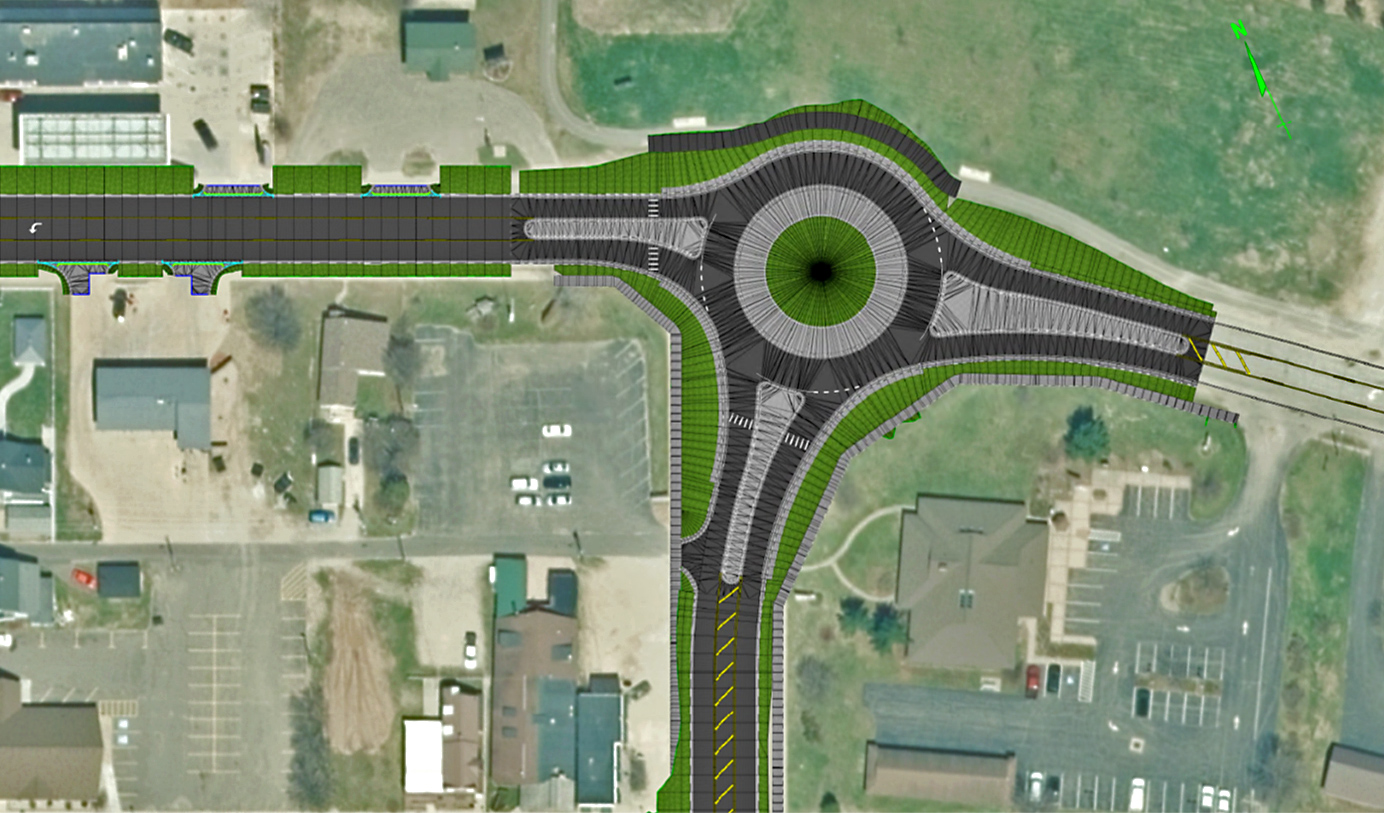
A rendering of the roundabout concept used by MDOT during its VPI presentations for the M–28 project in Munising.
MDOT is in the midst of a 2-year, $15 million project to reconstruct M–28 through the small but busy tourist town of Munising. Work includes a shared-use pathway and a roundabout at a major intersection as well as city utility work and streetscape improvements.
As part of a virtual public involvement pilot, MDOT deployed an online survey to get feedback from stakeholders on aesthetic choices and placement options for the project's streetscaping elements. The survey also gauged community interest in volunteering for future landscape maintenance efforts at the roundabout. MDOT incorporated the feedback into the design, which the agency hopes will lead to greater public engagement and sense of ownership.
"The use of the survey turned out to be a positive tool for us during the final design phases of all facets of our project," Munising City Manager Devin Olson said. "We have incorporated the majority of the survey's results into our plans. We were able to do this because the outreach occurred at a phase of the project in which we had the majority of the foundation of the plans done. The survey questions mostly dealt with details that, although minor in scope, will be some of the most visible attributes."
In addition to promoting the survey through MDOT and city of Munising social media accounts, MDOT crowdsourced publicity for the survey. The agency did this by encouraging the attendees of a public meeting that took place in July 2019, about a year out from the start of construction, to post the survey link on their social media accounts.
About 80 people attended the July meeting, along with three media outlets. MDOT streamed the meeting from a mobile device. As an alternative to the livestream for those unable to connect, MDOT posted a brief slideshow of the presentation on its Twitter feed and asked stakeholders to link to it. The slideshow logged more than 1,000 views.
In conjunction with social media posts, MDOT used traditional news releases, an email list, and links shared by stakeholder organizations to drive people to the survey. The survey attracted 90 respondents, 10 of whom indicated a willingness to perform annual landscaping duties.
Contact Kari Martin or Dan Weingarten of MDOT for information on the agency's use of virtual public involvement on the I–94 operations study and M–28 reconstruction project.
Contact Jill Stark of the FHWA Office of Planning, Stewardship, and Oversight, or Lana Lau or Carolyn Nelson of the FHWA Office of Project Development and Environmental Review, for information on FHWA's Every Day Counts round six virtual public involvement initiative.
Transportation agencies are using project bundling to capitalize on economies of scale more often and on more diverse projects than ever before. When highway agencies apply the advanced project bundling techniques promoted in Every Day Counts round five (EDC-5), they optimize resources, save delivery time, and address system performance goals while keeping crucial transportation assets in good repair.
"While highway agencies have used the bundling concept for some time, we're taking it to the next level by combining proven national practices into a more advanced approach," said David Unkefer, FHWA construction and project manager engineer and co-leader of the EDC-5 project bundling team. "This new approach looks for every opportunity to design, construct, and finance projects more effectively to address agency-wide objectives."
Some State, local, and tribal agencies have used their past successes to develop business rules for selecting bundles early in the planning and programming process. This creates agency-wide efficiencies by making project bundling a standard way of doing business.
Project bundling streamlines project delivery by combining environmental analysis and permitting, design, and contracting for greater efficiency. Alternative contracting methods, such as design-build, indefinite delivery/indefinite quantity, construction manager/general contractor, and public-private partnerships also help to create efficiencies.
"Project bundling is not just for large contracts. Bundles have ranged from two to 500 projects covering one county or the entire State," said Romeo Garcia, FHWA bridge construction engineer and co-leader of the project bundling EDC-5 team. "Depending on an agency's needs, smaller bundles can help keep the local contracting community engaged, while larger bundles offer opportunities for small and disadvantaged businesses."
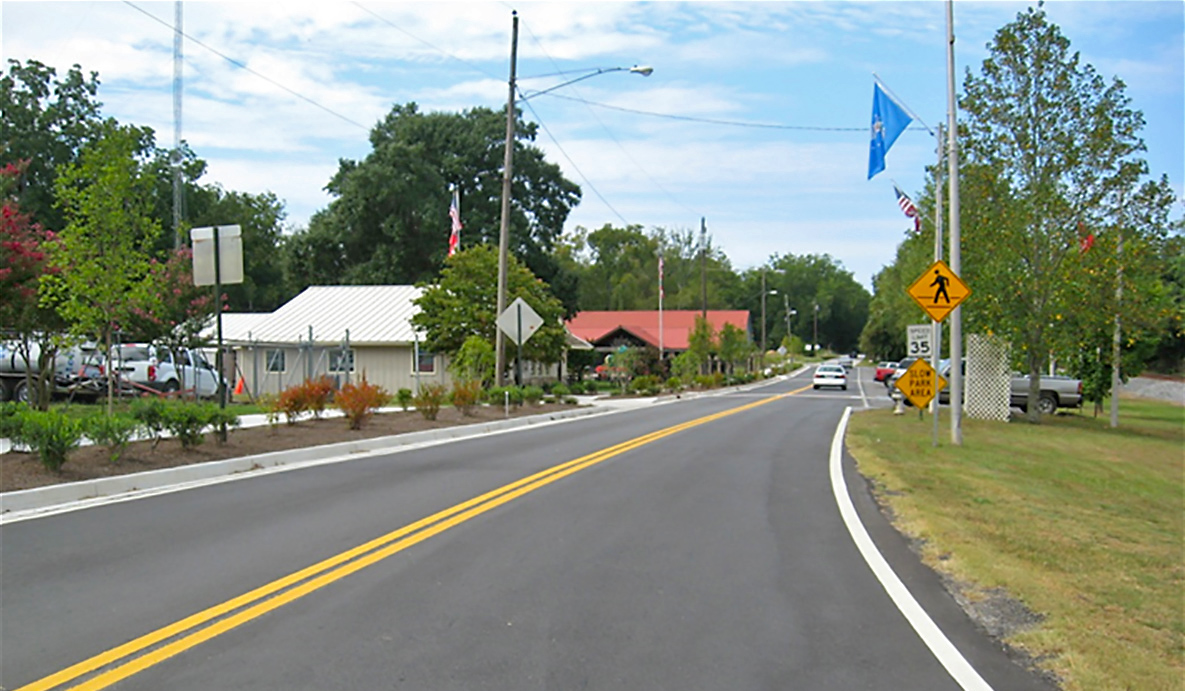
This roadway in Oakwood, GA, was improved as part of the city's pavement management and preservation bundling program with neighboring cities.
Bridge bundling took the spotlight in recent years due to the backlog of bridges in poor condition. For example, the Oregon Department of Transportation (DOT) identified 271 bridges for replacement and strategically bundled the projects based on location and work type. Bundling three bridges on I-5 over the Willamette River saved an estimated 16 percent, or $31 million.
The focus has now expanded to "project" bundling, which includes projects to alleviate traffic bottlenecks, replace culverts, create smoother pavements, address safety hot spots and high-risk rural roads, and make lighting, sign, and Americans with Disabilities Act (ADA) improvements.
The Minnesota DOT removed the ADA scope from three proposed paving projects in the same city and bundled them into a new, single project that included 150 ADA ramps and sidewalks. The agency has also bundled bridges, signs, maintenance projects such as noise walls, and rural intersection safety equipment.
The city of Oakwood, GA, with a population of 4,000 and 22 lane miles of pavement, partnered with nearby cities to lower costs associated with pavement management and preservation treatments. Combining work with neighbors increased the amount of work, attracting more bidders and reducing the cost of milling by nearly 80 percent.
The Indiana DOT (INDOT) adopted project bundling as a standard practice based on historical data that demonstrated value when projects are bundled well, and it is incorporating artificial intelligence to further expand project bundling benefits. A machine-learning platform uses INDOT's historical and asset management data, along with business rules, to automate and optimize bundle selections over multiple program years. This approach has increased bundling savings by 40 percent and is expected to save INDOT $108 million over the next 4 years.
FHWA is creating new tools to help agencies implement a more advanced approach to project bundling. A self-assessment resource will soon be available to help an agency work its way from a developing program to one that is institutionalized—where bundling is the standard for delivering a program of projects that addresses system needs more effectively. The self-assessment will be based on 25 nationally proven practices, each linked to resources in a new FHWA project bundling resource database that includes case studies, contracts, programs, and research. The database is now available on FHWA's Bundled Facilities Overview web page, along with case studies, webinars, and lessons learned on bundling programs.
"Using some combination of bundling practices to deliver statewide programs just makes sense in an age of deteriorating assets, diminishing resources, and project backlogs," said Unkefer.
Consult the Bridge Bundling Guidebook for bundling case studies and information applicable to any type of roadway project.
Implement project bundling development using FHWA funding opportunities.
Contact Romeo Garcia of the FHWA Office of Infrastructure or David Unkefer of the FHWA Resource Center for information and technical assistance.
For more than a decade, the Federal Highway Administration's Every Day Counts (EDC) program has promoted proven but underused innovations that enhance roadway safety, improve project delivery, and reduce traffic congestion. Across the country, agencies attest to the value of adopting these new technologies and processes, along with a cultural change in how they deploy innovation. As the transportation community participates in EDC round six, Innovator is featuring articles that reflect on what the program has accomplished.
Since its inception, the EDC program has helped identify and promote innovations to help improve traffic flow and increase safety. In rounds one through three, these included adaptive signal control technology (ASCT), national traffic incident management (TIM) responder training, and smarter work zones (SWZ). Each successive round of EDC is building a network of connections that creates more opportunities for enhancing the Nation's transportation system.
Traffic congestion slows the movement of travelers and freight, and as congestion increases, so do traffic-related incidents and air quality impacts. Studies have shown that about half of all delays happen at the same times and places every day, and the rest are due to temporary disruptions of the transportation system such as traffic incidents, work zones, weather, and special events. Traffic signal timing that is not in sync with traffic conditions can contribute to congestion and delays. ASCT adjusts the timing of each signal phase to accommodate changing traffic patterns throughout the day, helping improve traffic flow.
When ASCT first became available, its benefits were apparent but its implementation and maintenance needs for public agencies were not yet clear. In round one of EDC (EDC-1), the focus on ASCT provided additional resources that helped agencies move this relatively new technology into widespread use. EDC's ASCT team developed a resource guide and offered training through FHWA's National Highway Institute as well as local workshops for agency staff to gain proficiency with the technology.
Prior to the start of EDC, about 12 agencies were using ASCT. During EDC-1 that number rose to more than 100 agencies, and the number of agencies using ASCT continued to grow after EDC-1 ended. ASCT is now widely deployed in both urban and suburban locations, and even in some rural locations, based on agency needs and resource levels.
"EDC resources helped stakeholders advance from being excited about the technology to being successful" said Eddie Curtis, an FHWA traffic operations engineer and EDC ASCT team leader. "Agencies are now seeing a return on investment," he said. "The network of people and connectivity built through EDC helped it arrive at this point."
When a traffic incident occurs, it can create congestion and unsafe driving conditions that affect both motorists and first responders. In round two of EDC, FHWA partnered with the second Strategic Highway Research Program (SHRP 2) to expand TIM training, offering a new, interdisciplinary approach to traffic incident response.
EDC helped expand this new type of training throughout the country by providing a national forum for telling transportation and public safety professionals and elected officials the story of TIM, including sharing best practices and case studies on how it has been implemented successfully. EDC's outreach helped the ongoing TIM training evolve from an innovation to a standard business practice for many organizations and for the 500,000 responders who have received the training.
"The EDC marketing and outreach process helped spread TIM training," said Curtis. "The EDC model created opportunities and momentum for cooperation by bringing police, fire, towers, public works, and DOT traffic signal people together at workshops, which had not happened before."
Jim Austrich, FHWA TIM program manager and EDC team co-lead, said TIM is now taught routinely as part of the curriculum for traffic operations, police and fire academies, and technical colleges. "EDC helped build connections across State divisions, departments, and groups that raised awareness of the impact of closing lanes," he said. "Traffic signals experts are now working with winter operations personnel, and they are coordinating with incident managers. TIM has become part of their common language."
Work zones are meant to provide a safe environment for highway workers and travelers alike, but changes in traffic patterns, narrower rights-of-way, and other construction activities are factors that can lead to crashes, injuries, and fatalities. Round three of EDC promoted Smarter Work Zones (SWZ), which focused on two strategies to minimize travel delays and help maintain motorist and worker safety: coordination of construction projects to reduce work zone impacts, and technology applications, such as queue management and speed management systems, to dynamically control traffic in and around work zones.
Because implementing new technology applications and synchronizing work zones involves coordination among different divisions and groups, sometimes across jurisdictional lines, the working relationships set in place by previous EDC rounds helped lay the groundwork for SWZ to succeed.
Because many EDC innovations are connected, especially in traffic operations, the processes, approaches, and relationships inherent to the program have provided one of its biggest outcomes—a deployment network that is used beyond a single innovation and has lasting benefits over time.
David Johnson, manager of FHWA's road weather management and work zone safety management programs, said the connections formed during the EDC process have created future opportunities for progress. "It's really about the momentum behind EDC," he said. "If we pull on the thread behind TIM and other EDC innovations, we can uncover more advances based on the momentum they have helped build. This is what the EDC story has been about."
Contact Eddie Curtis, FHWA Office of Operations, for information on ASCT.
Contact Jim Austrich or Paul Jodoin, FHWA Office of Operations, for information on TIM training, including the latest resources available through EDC-6 Next-Gen TIM.
Contact David Johnson, FHWA Office of Operations, for information on SWZ.
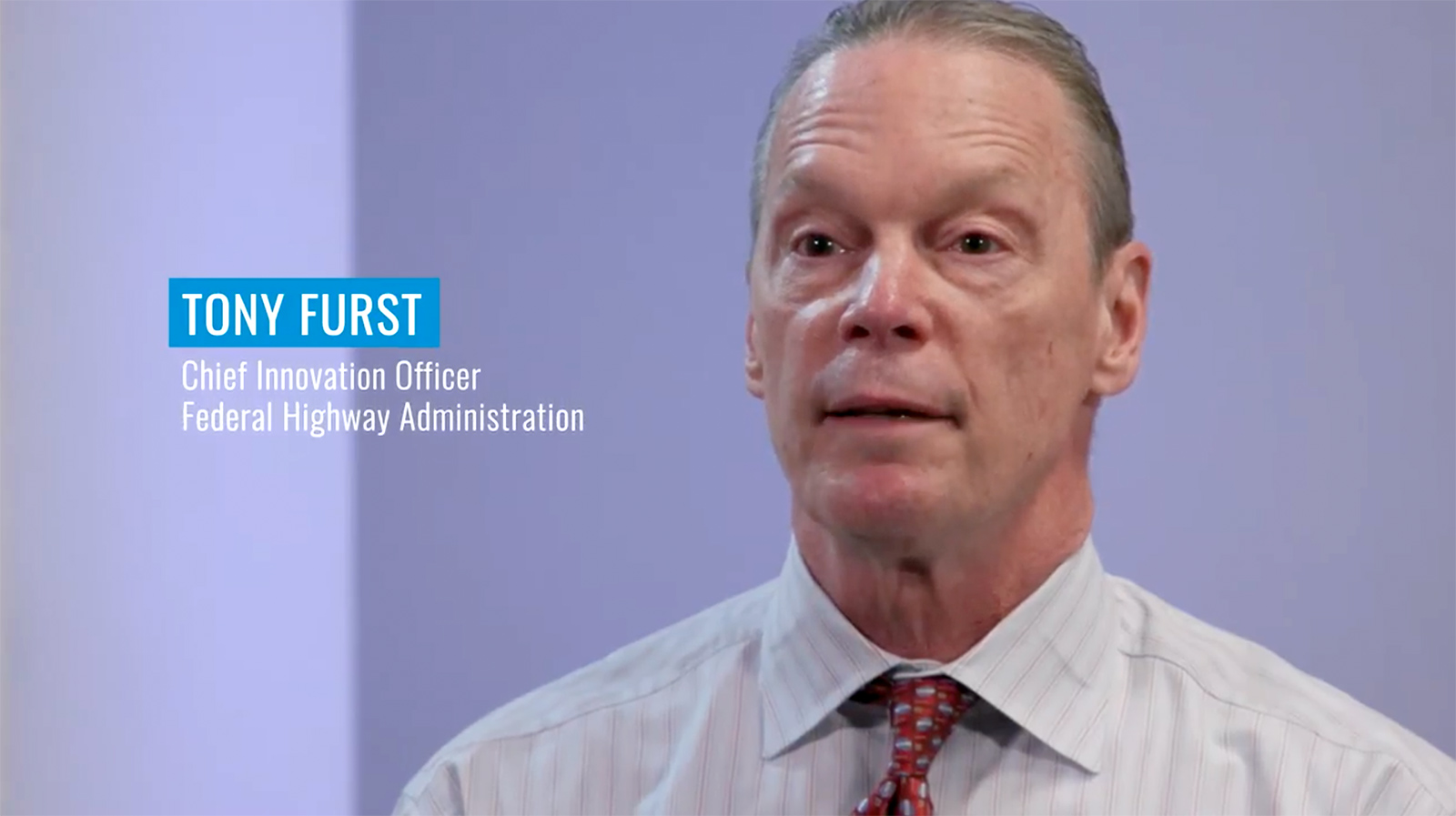
View the video series
The FHWA Center for Transportation Workforce Development website features a video series with valuable insights into the Highway Construction Workforce Partnership (HCWP) program from Tony Furst, (retired) FHWA Chief Innovation Officer, and others representing the federal, partner, and hiring perspectives. The videos describe the unique challenges facing the highway construction workforce and how the HCWP addresses these concerns.
Innovator, published by the FHWA Center for Accelerating Innovation, advances implementation of innovative technologies and accelerated project delivery methods in the highway industry. Its audience is transportation professionals in highway agencies, trade and research groups, academia and the private sector, and the driving public.
Pete Buttigieg, Secretary, U.S. DOT
Stephanie Pollack, Deputy Administrator, FHWA
Thomas Harman, Director
Jeffrey Zaharewicz, Senior Advisor
Sara Lowry, Program Coordinator
Fawn Thompson, Program Coordinator
Julie Zirlin, Program Manager
Letha Cozart, Managing Editor
James Cline, Jr., Designer
Pat Holcombe, Web and Print Design
Rodney Walker, Designer
Access past issues in the Innovator Archive and have the next issue sent to your mobile device by texting "FHWA Innovation" to 468311. Email reprint requests to Julie Zirlin.